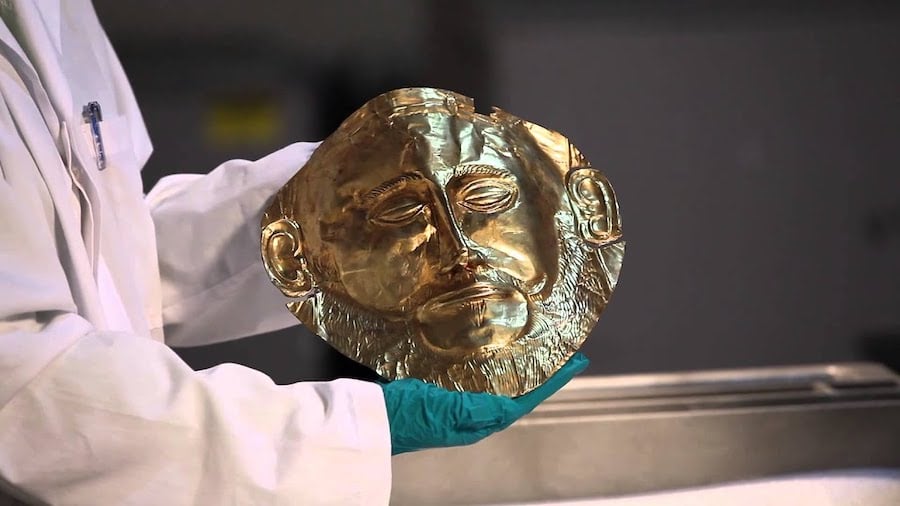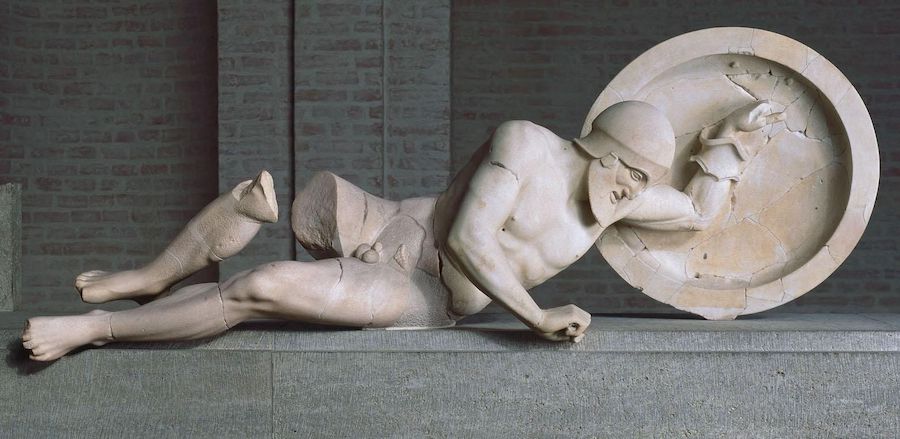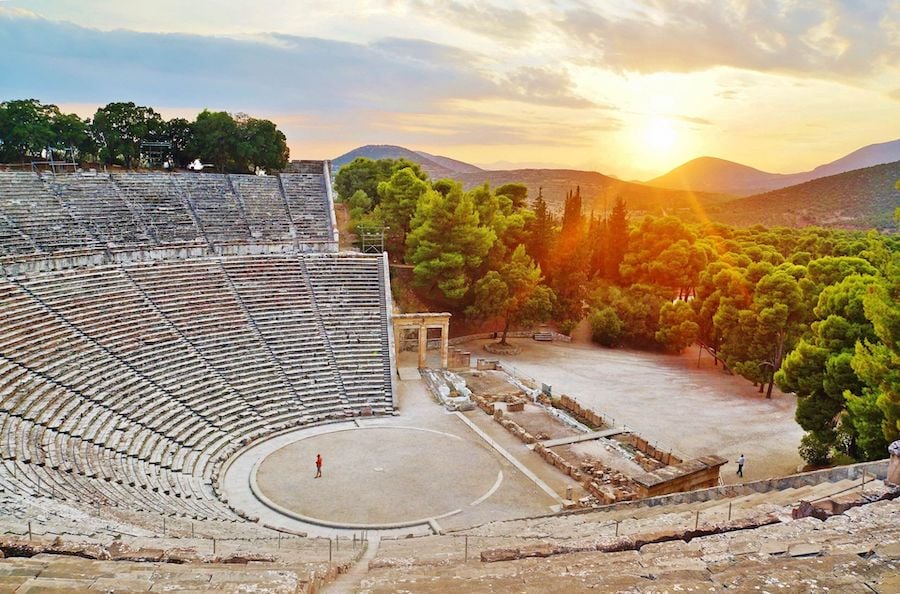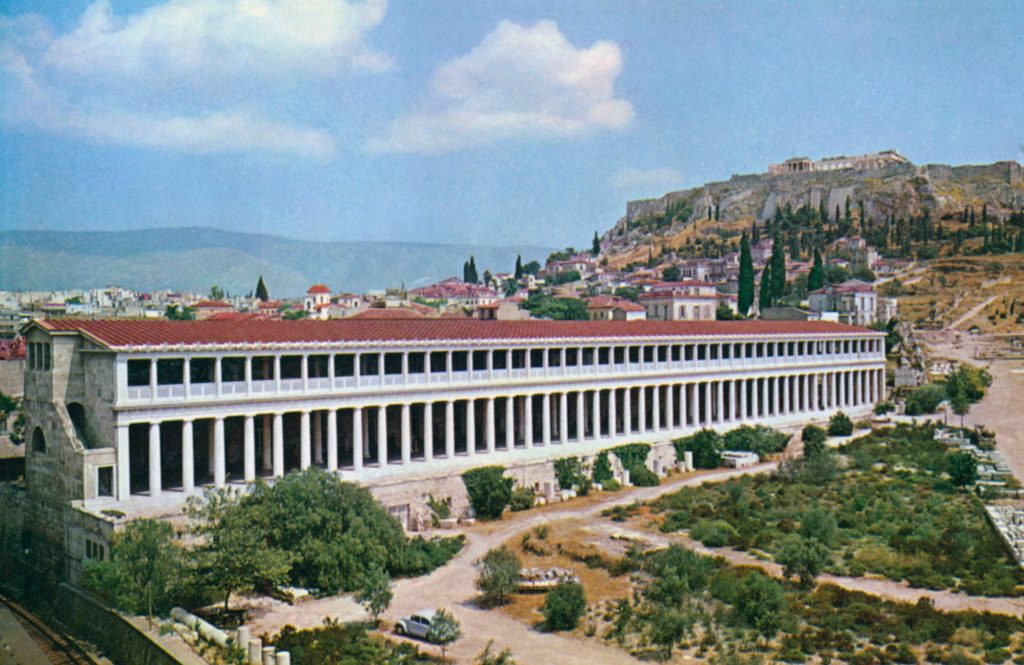Curiosities
Everybody has their preferred time of antiquated workmanship. For me it's medieval works of art of war (truly, google them, they're entertaining), yet workmanship, models, and engineering from Antiquated Greece are an extremely close second.
Here are the main 10 Antiquated Greek perfect works of art.
Pergamon Special raised area
The Pergamon Special raised area was worked around 150 BC at the most elevated point in the Antiquated Greek city of Pergamon. The Ruler Eumenes II assembled this structure, and it is at present in plain view in the Pergamon Gallery in Berlin. It is about 36 meters wide and 33 meters down and filled in as a patio in the acropolis (a strengthened piece of an Old Greek city).
Mask of Agamemnon, King of Mycenae
This one is a personal favorite because when we were learning about it in school, it was really fun to pronounce out loud. Also, it looks incredibly cool. The gold Mask of Agamemnon was supposedly created around 1500BC and was discovered in 1876 by Heinrich Schliemann. When it was discovered, it was covering the face of what was presumed to be the body of a legendary Greek soldier and leader during the Trojan War, Agamemnon. However, when scientists carbon-dated the mask, they found that it was crafted nearly 300 years prior to the period of the Trojan war. Nevertheless, the name stuck and that’s what this mask is called to this day.

Venus de Milo
I actually had a chance to see this with my own eyes when I visited the Louvre, and it was incredible. This marble sculpture of Aphrodite of Milos is one of the most famous works of art we have from Ancient Greece. It is presumed to have been created by Alexandros of Antioch around 200 BC. It is 6 feet and 8 inches tall (so, larger than people would have been in 200BC (and now, for that matter), but it is meticulously crafted and very detailed.
Fun fact: all though all the sculptures that we see in museums today are white and marble, there is evidence that all sculptures were painted with vivid colors when they were actually created!

Winged Victory of Samothrace
This statue is also on display in the Louvre Museum. Winged Victory (Nike) stand on the prow of a ship looking forward. According to historians, this statue was offered by the people of Rhodes to commemorate a naval victory around 200BC. The monument was discovered in 1863 by Charles Champoiseau.
Fun fact: this is the Nike goddess after which the actual Nike brand is named after.

The Parthenon Frieze
This frieze was created between 443 and 437 BC. Of the 97 surviving stones from the Frieze, 56 are presented in the British Museum of London. The largest portion of the other stones are exhibits in the Acropolis Museum in France. Because the British Museum refuses to return the 56 pieces of the Frieze to its place of origin (Greece), there’s actually quite a lot of tension between the British Museum and the one in Acropolis.
The British might have toned it down a bit with their colonization efforts, but they’re not bending over backwards to fix the damage done and make amends.

The Siren Vase
This is, hands down, one of the most well-known art pieces from Ancient Greece. It depicts the sirens that are trying to seduce Odysseus during his long, tedious, and perilous return home from Ithaca. Historians place the creation of this Greek masterpiece between 480 and 470 BC. Like the Parthenon Frieze, this vase is also part of the British Museum’s collection.

The Fallen Warrior of Aphaia
This sculpture was made in 510BC. As you can tell from the title — it depicts a badly injured warrior who, despite his injuries, refuses to surrender to his enemies. This sculpture was discovered in the 20th century and is currently on display at the Glyptothek museum in Munich.

Temple of Olympian Zeus, Athens
And now, let’s move on from sculptures to architectural marvels. This is a temple in the center of Athens and its construction started in the 6th century BC by Peisistratos. What’s significant about this temple’s construction process is that it was only completed in 131 AD, under the reign of the Roman Emperor Hadrian. This means that it took over 600 years to complete. But the end result is that it still exists today and you can go visit! Good and lasting structures take a long time to build.

The Great Theater of Epidaurus
If you’ve ever read any book about theater in Ancient Greece, then you have definitely seen pictures of the Great Theater of Epidaurus. It is huge, even by today’s standards, and could provide seating for over 13,000 people. Can you imagine how quiet people would have to be to hear what’s going on on stage? I’m sure the actors, singers, and performers of Ancient Greece didn’t have fancy sound systems to help them out during performances.
But this is something that the creators of the theater took care of. Even though they didn’t have tools to amplify the sounds coming from the stage, the materials used to build the theater (limestone) helped “mute” the sound of crowd chatter while resonating and amplifying the sounds coming from the stage.

Stoa of Attalos, Agora
This architectural marvel was constructed as a gift to Athens. It was built by King Attalos II, who ruled between 159 and 138 BC. As a building that was constructed during the later period of the Ancient Greek Empire, it’s architectural and decorative elements are significantly more advanced than that of earlier buildings.
Unfortunately, a lot of it was destroyed in 267, and what we see today is a reconstruction that was conducted between 1952 and 1956.


